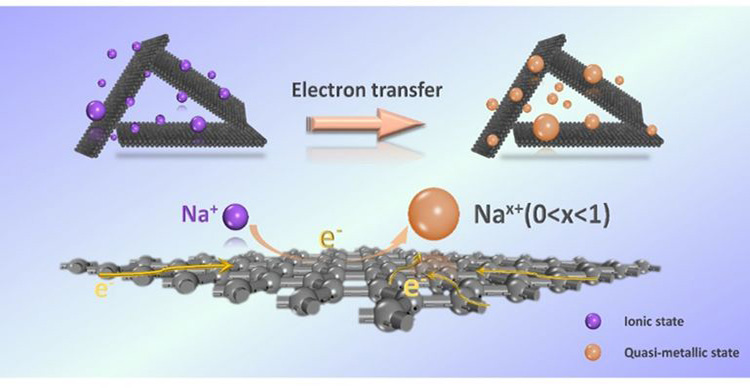In the fourth quarter of 2022, the sodium-ion battery industry will act frequently. Meituan Holding Company Kuxun Technology invested in Huzhou ultra-sodium new energy and entered the sodium-ion battery industry across the border; Qicai Chemical announced that it plans to invest in Suzhou Yuena New Energy Technology Co., Ltd. with Yueda Auto Fund and Wuzhong Financial Holding Fund; Shunhao announced that it had signed an agreement with Hunan Jiusen New Energy Co., Ltd. to jointly invest and set up Hunan Haosen Sodium New Energy Technology Co., Ltd. to enter the sodium ion battery industry across the border. Many enterprises have entered the sodium-ion battery industry across the border, which further heats up the industry.
Although the popularity of the sodium ion battery industry has increased significantly recently, there are still some bottlenecks in its industrialization. Among them, the battery anode electrode material is the key link that restricts its industrialization. The main reasons are as follows:
1) Poor adaptability of production process: different raw materials need different process adaptation, which is difficult to adapt;
2) Poor batch consistency of raw materials: different raw materials have different years, places of origin, and even parts, which will affect the quality of hard carbon. For example, the year and place of origin of coconut shell are different, and the inner and outer layers of coconut shell are used, and the hard carbon obtained is also different, so the batch consistency is difficult to guarantee;
3) The cost is high. Domestic hard carbon materials are imported from Japan, and the price of imported hard carbon materials is about 15-20 million/ton. If foreign hard carbon products are selected as negative electrode materials for sodium ion batteries, the relatively mature lithium iron phosphate batteries have no cost advantage, which will affect the industrialization process of sodium ion batteries.

The negative electrode materials of sodium ion battery mainly include hard carbon materials and soft carbon materials, of which hard carbon materials are the main route. The routes of hard carbon precursors are diverse, and can also be divided into biomass, resin, chemical raw materials, etc. Biomass precursors have become the mainstream precursor route because of their wide sources and high cost performance. The production process of biomass precursors is difficult, but it is difficult to screen suitable precursors and stabilize batch supply. In addition, at present, there is a research and development technology of resin and anthracite mixed hard carbon, which has good performance, low cost and stable supply, and is expected to become one of the mainstream application technology routes in the market in the future.
In terms of parameters, the parameters of domestic hard carbon materials are equivalent to those of foreign hard carbon materials at present, but according to the feedback of the test results of domestic battery enterprises, the cycle stability and magnification performance of foreign hard carbon materials are better.
Although the performance of domestic hard carbon anode materials is relatively weak at present, the cost advantage of domestic products is obvious. In addition, domestic enterprises are closer to customers. Domestic enterprises are expected to accelerate the research and development of hard carbon products technology, and the performance of domestic hard carbon products is expected to catch up with the performance of foreign hard carbon products.
From the perspective of cost, the cost advantage of domestic hard carbon products is obvious. The cost of domestic low capacity hard carbon products is 30000 to 40000 yuan/ton, and the cost of high capacity hard carbon products is 50000 to 60000 yuan/ton. At present, domestic hard carbon products are mainly high-capacity products, and the cost of foreign hard carbon products is 3-4 times that of domestic hard carbon products. From the perspective of cost, sodium ion batteries mainly focus on low cost advantages. In the future, the negative electrode of sodium ion batteries will be mainly domestic hard carbon products, which is expected to break the situation that hard carbon anode materials rely on imports.
With the gradual decline in the cost of hard carbon anode materials and the continuous development of technology, it is expected to promote the industrialization of sodium ion batteries. Sodium ion batteries are expected to meet the GWh level shipment in 2023, driving the domestic hard carbon anode materials to break through the thousand-ton level shipment.
Contact: Jason Wang
Phone: 13580725992
E-mail: sales@aooser.com
Whatsapp:13580725992
Add: No.429 Guangming Road, Shenzhen City, Guangdong Province
We chat
